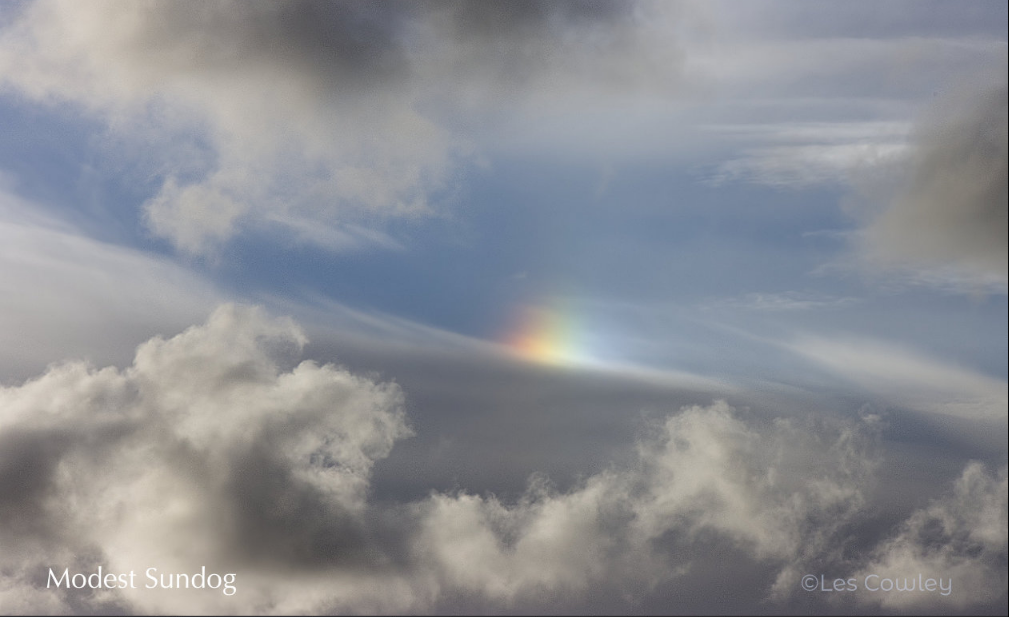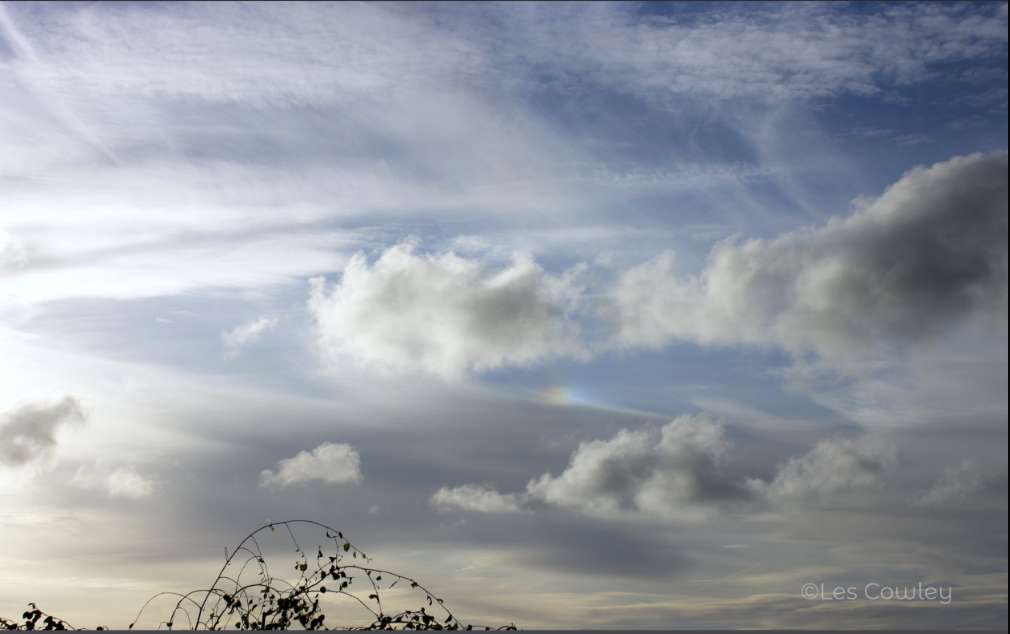Modest sundog
The Modest Sundog: A Hidden Gem in the Sky
When it comes to atmospheric optics, we often marvel at the spectacular displays of nature, such as vibrant rainbows and dazzling sundogs. However, not all sundogs are created equal. While some command our attention with their brilliance, others are more modest in their appearance. These unassuming celestial phenomena may go unnoticed by many, but for those who take the time to observe the ever-changing sky, they can be a delightful surprise.
One such modest sundog caught my eye during an early evening when the sky was in a state of constant flux. Unlike its more flamboyant counterparts, this sundog seemed to come and go, waxing and waning in its intensity. It was a fleeting moment of beauty that might have easily escaped my notice if I hadn't developed the habit of always checking the width of my outstretched hand from the sun.
Sundogs, also known as parhelia, are caused by the refraction and scattering of sunlight by ice crystals in the atmosphere. These crystals act like prisms, bending and dispersing the light into its component colors. When conditions are just right, these ice crystals align horizontally, creating a halo of light on either side of the sun. This halo is what we perceive as a sundog.
While sundogs are not as commonly observed as rainbows, they still make regular appearances in our skies. In fact, statistics show that on average, a sundog can be seen once or twice a week, depending on your location. These unassuming celestial companions quietly grace our atmosphere, adding a touch of wonder to our everyday lives.
To fully appreciate the beauty of a modest sundog, it's important to understand the science behind its formation. The ice crystals responsible for creating these optical marvels are typically found in cirrus clouds, which are high-altitude clouds composed of ice particles. As sunlight passes through these ice crystals, it undergoes a process of refraction, where the light is bent and separated into its constituent colors. This dispersion gives rise to the vivid hues that adorn the sundog.
The size and shape of the ice crystals play a crucial role in determining the appearance of a sundog. When the crystals are relatively small and uniform in size, the resulting sundog may appear as a faint, diffuse glow. On the other hand, larger crystals can produce more distinct and vibrant sundogs. The interplay between crystal size, shape, and the angle of sunlight creates a mesmerizing display of light and color in the sky.
As with many atmospheric phenomena, the presence of a sundog is heavily influenced by weather conditions. Clear skies with high-altitude clouds are ideal for sundog formation, as they provide a canvas for the interplay of light and ice crystals. Additionally, the position of the observer in relation to the sun and the alignment of the ice crystals are key factors in determining whether a sundog will be visible.
Next time you find yourself gazing at the sky, take a moment to appreciate the subtle beauty of a modest sundog. These unassuming celestial companions may not demand attention like their more vibrant counterparts, but they possess a quiet charm that adds a touch of magic to our daily lives. So, keep an eye out for these hidden gems in the sky and let yourself be captivated by their understated elegance.

An earlier OPOD showed a bright, unmissable sundog. Many are more modest. I noticed this one in an early evening's complex and quickly changing sky. The dog waxed and waned. It might have been overlooked was I not in the habit of always checking an outstretched hand's
width from the sun. It's these little fellows that help make up the statistic that a sundog is visible on average once or twice a week depending on where you are.

Note: this article has been automatically converted from the old site and may not appear as intended. You can find the original article here.
Reference Atmospheric Optics
If you use any of the definitions, information, or data presented on Atmospheric Optics, please copy the link or reference below to properly credit us as the reference source. Thank you!
-
<a href="https://atoptics.co.uk/blog/modest-sundog/">Modest sundog</a>
-
"Modest sundog". Atmospheric Optics. Accessed on November 26, 2024. https://atoptics.co.uk/blog/modest-sundog/.
-
"Modest sundog". Atmospheric Optics, https://atoptics.co.uk/blog/modest-sundog/. Accessed 26 November, 2024
-
Modest sundog. Atmospheric Optics. Retrieved from https://atoptics.co.uk/blog/modest-sundog/.